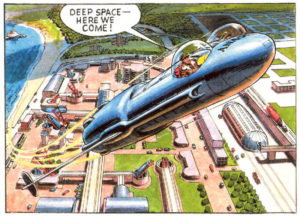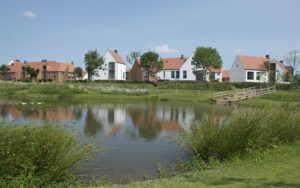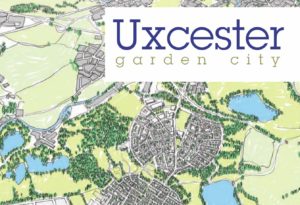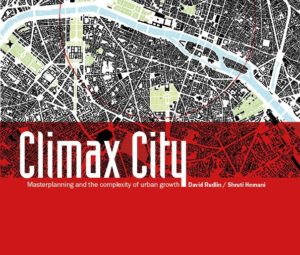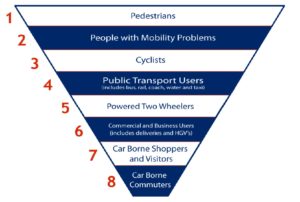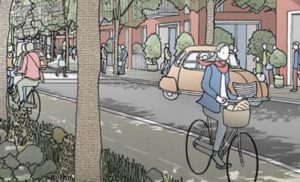
29th March 2018
Derwenthorpe is a new area of housing between Tang Hall and Osbaldwick which has been developed by the Joseph Rowntree Housing Trust. It describes itself as ‘attractive, affordable, eco-friendly family homes in a digitally inclusive, mixed-tenure community’. In other words, in terms of new developments in York and when considering the Rowntree legacy in terms of housing standards generally – Derwenthorpe is an example worth paying attention to in the context of homes on York Central.
Through contacting the Residents Association, we met eight residents, who showed us around, reflected on living there and were even kind enough to invite us in to their homes to see the development from the inside out.
‘A value based on other than the commercial’: motivations for moving to Derwenthorpe
The sense of community was felt to be a major reason to live there, although it has grown slowly (partly to do with the phasing and slow completion of the scheme). It was said that “People care about the place more that they would about a normal street” “People generally care – although not always about the same things”. There is a community room (in the central building which also houses the district heating boilers) but this was felt inadequate. There is a proposal for a community café but this would require the building to be extended.
The fact it was JRHT was significant for many of the people we spoke to: ‘someone we trust’, JHRT are known for ‘good thinking in terms of social issues’ and because they have ‘A value based other than the commercial’.
Many of the houses have external painted brickwork which will need upkeep to maintain appearance – this is written into covenant but is yet to be really tested.
Density is fairly high and there is overlooking, particularly from the three-storey dwellings but no-one mentioned this as problematic – “I wave to the neighbours across there if I see them”. One or two houses ended up with poor outlook (onto parking areas) but this will possibly be improved as planting matures. Views onto green space are much loved, especially where from winter gardens / balconies.
Mixed Tenure
Resident we spoke to liked the social mix and there was no resentment about home ownership being surrounded by rented/social housing. People knew and got on with neighbours from different social backgrounds and a number named this as one of the best features of the development. House size is no indicator of tenure – a number of the large 4/5 bedroom houses are rented.
Heating and Insulation
There are problems with the district heating scheme and with Mechanical Ventilation with Heat Recovery (MVHR) installations (this was reduced to extract-only Mechanical Extract on later phases – “I’ve got a loft but I can’t use it as it’s so full of ductwork”). There is a retired engineer living in the scheme and he seems to be sorting it all out single-handedly. But the MVHR is good where it works – occupant with respiratory problems finds it a big improvement.
Insulation standards and general quality of construction has reduced towards later phases. One resident said “On York Central make sure you maintain quality”. There was horror at the general arrangements on site; the impression was that there were new subcontractors constantly coming in and no learning of lessons from previous completions.
Houses were generally felt to be comfortable.
Main plus points:-
1. Generous space standards with good size rooms and plenty of storage space.
2. Lifetime homes design to allow for installation of stairlift or lift, conversion of WC to wet room, enough space in bathroom to move around etc.
3. High ceilings give very light, airy feel. One residents described the houses as having ‘ a Scandinavian feel’
4. Winter garden feature in some houses gives good daylight and connection with outside while maintaining privacy
5. Houses have small extra room for study
6. They are easy to keep warm and are draught-free. Energy bills suggested as around £500-£600/yr
Transport:
The bus service has not been as promised – “we were promised a half-hourly electric bus, we’ve got an hourly diesel bus” and serves Tang Hall too. Majority of households have a car and many have more than one, which results in higher density of parking than was originally designed for. There is a car club car available (Enterprise CC) but no-one seemed to know if it was ever used (I just checked – it’s got no bookings for the next week). People said residents were “encouraged” to cycle – they received a £150 grant towards a bike when they move in and houses had a “secure” cycle shed (although many people had removed/replaced these as they were very bulky and not particularly secure).
Public Spaces
One resident commented that “errands take ages because you always meet people you know”, although the streets were quiet when we visited (it was cold, though). The small public squares were little-used, although the larger open spaces were very popular. The green space and play area was completed at the start of the development, rather than being left until last.
The two ponds are used for Sustainable Urbans Drainage System (SUDS) and the most open of them has shallow planted margins to make it safe even with children around. The second is fenced off due to greater variation in water level. The system is so effective that water was pumped into it from Osbaldwick village during flooding recently. The green space has managed to retain some existing tree planting and hedging.
All residents pay a service charge based on size of house. JRHT are quite transparent in terms of how the service charge is being used – it pays for a Site Manager and will ultimate cover maintenance of the public space (while the building is still ongoing these public areas ae maintained by David Wilson Homes, the builders). Although the spaces are managed in a public way there is some community “ownership” – one resident has guerrilla-planted daffodils. There have been some issues with community self-organisation – for example, BBQs are not allowed.
Links with Tang Hall/Osbladwick
There was some tension with surrounded area – a sense that the development was not wanted – but this has been getting less and less. As one noted, ‘it had been known from the 60s this piece of land would be built on’. One idea we explored – based on ideas from last week’s public space discussions – was building facilities on the outside (rather than the inside) as a way of helping with links to Osbaldwick/Tang Hall.

